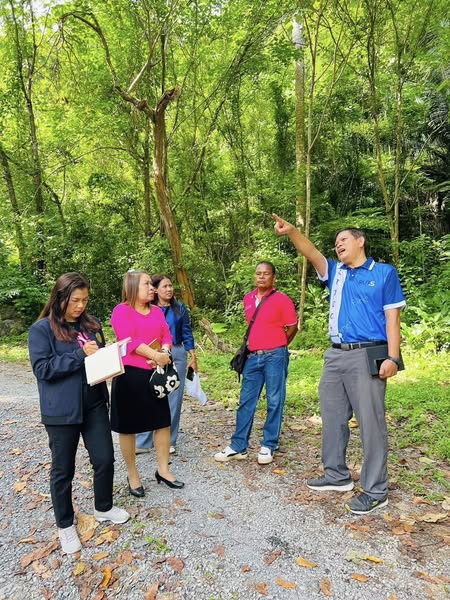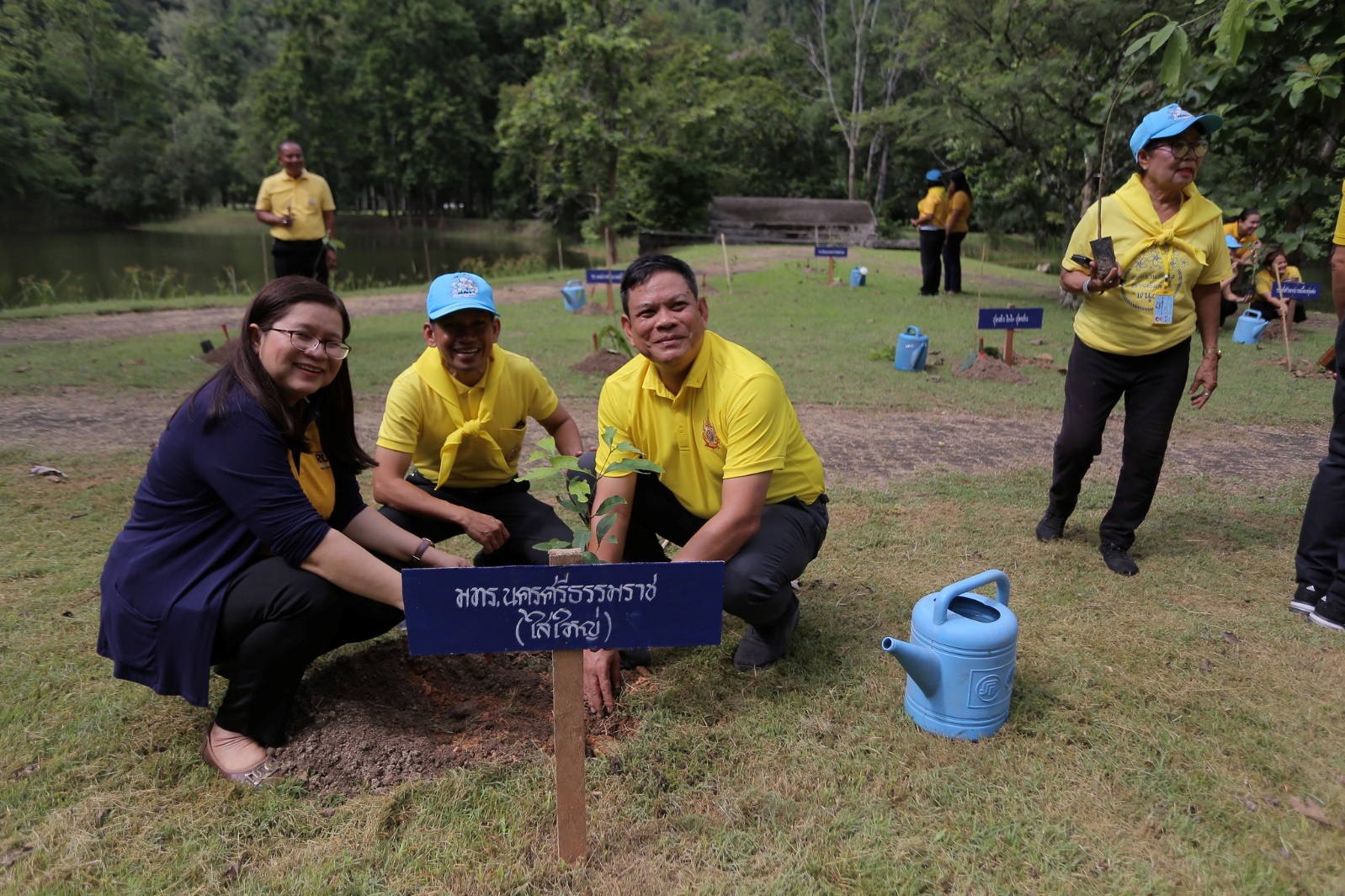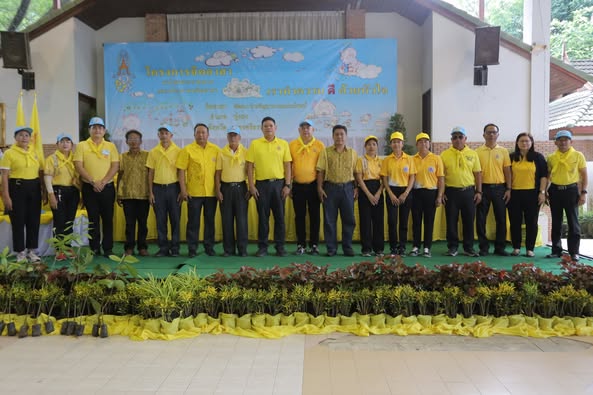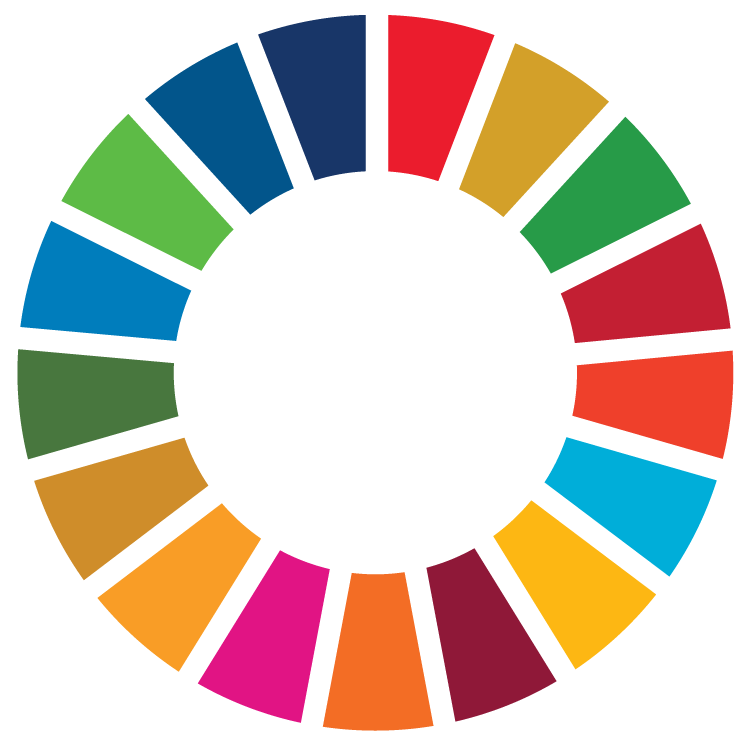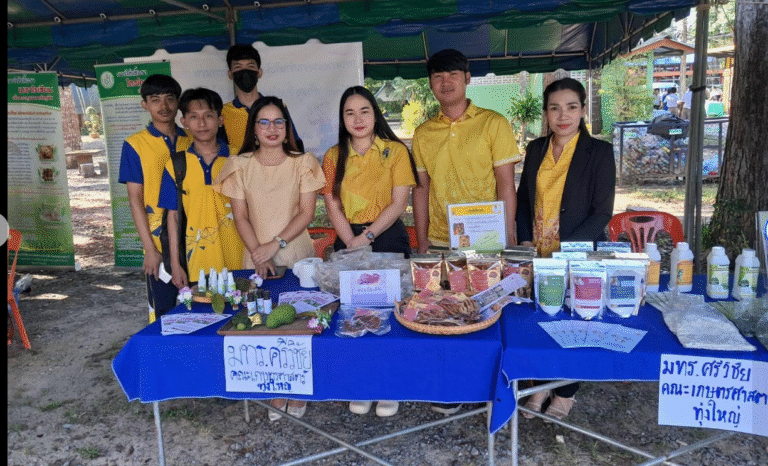Reporters: Asst.Prof.Dr. Prapot Maliwan
Assoc.Prof.Dr. Pornsil Seephueak
Asst.Prof.Dr. Nion Chirapongsathonkul
Asst.Prof.Dr. Worawitoo Meesook
Evidence Date: during 2024 Jan-Dec
Related SDGs:
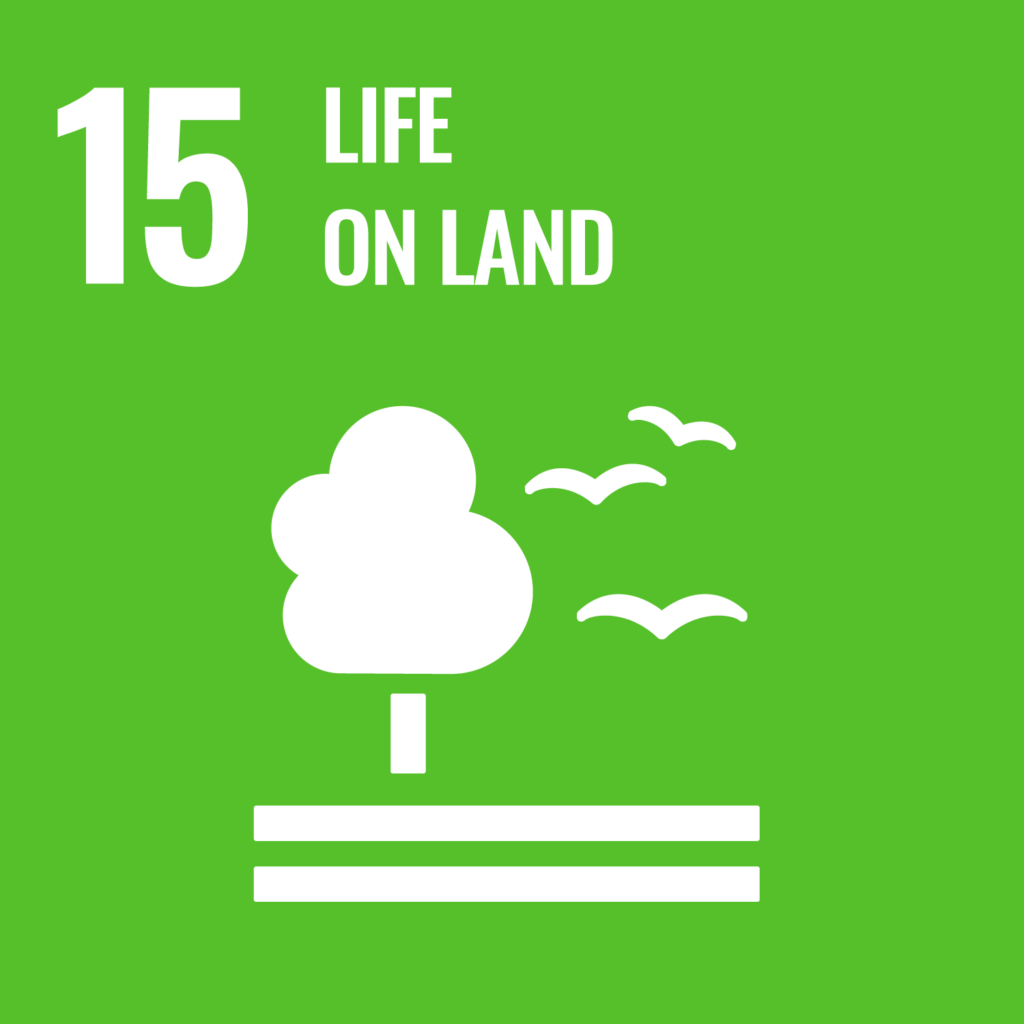
Related Indicators: 15.2.1
Details:
Rajamangala University of Technology Srivijaya (RUTS) continues to promote sustainable environmental management through collaborative research and community engagement. Asst. Prof. Payomporn Raksachon from the Faculty of Management Technology works closely with local organizations, including the Talay Noi Wetland Foundation and the Phatthalung Conservation Group, to conserve the Sago Palm Forest ecosystem. Sago palm (Metroxylon sagu) forests play a vital role in maintaining wetland biodiversity and supporting local livelihoods. The project focuses on improving the management of sago palm resources while restoring degraded wetland areas. These ecosystems provide habitats for various species of fish, amphibians, and insects that thrive in the water-rich environment. The community participates in replanting and sustainable harvesting to ensure long-term ecological balance. Through scientific guidance and local wisdom, the project integrates conservation with value-added production, such as sago flour and protein-rich sago weevil products. These activities help generate local income while preserving natural ecosystems. The partnership demonstrates how academic institutions can empower communities to become active stewards of biodiversity. Together, the project ensures that wetland resources are used sustainably for both people and nature.
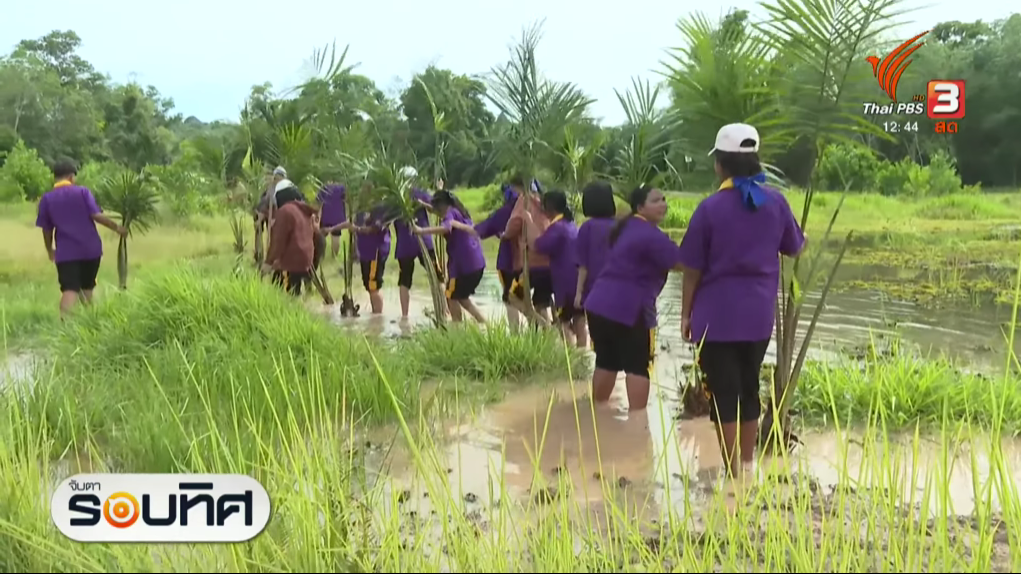
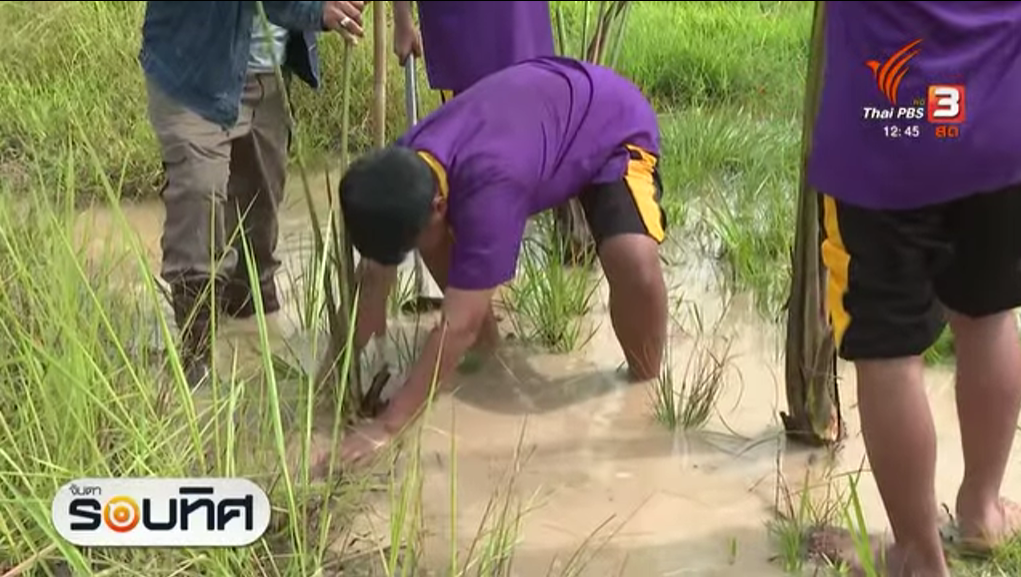
On Earth Day, April 22, 2024, RUTS supported a Forest Ordinance Ceremony in Wang Sai Community, located within the Wang Yai Watershed Forest in Nakhon Si Thammarat Province. This symbolic event aimed to raise environmental awareness and promote community participation in forest conservation. The Forest Ordinance serves as a traditional and cultural signal to protect trees and natural areas from destruction. It strengthens social responsibility by uniting people under shared conservation goals. Local residents, students, and government representatives gathered to celebrate Earth Day and commit to protecting the watershed. The Wang Yai forest, rich in biodiversity, supports numerous plant and animal species vital to the local ecosystem. Preserving this forest helps maintain soil stability, water sources, and ecological connectivity between mountain and lowland habitats. The ceremony also included educational activities highlighting the importance of biodiversity and forest ecosystem services. By combining cultural tradition with modern conservation practices, the community established a model of coexistence between humans and nature. This initiative reflects the strength of grassroots participation in sustaining Thailand’s natural heritage.
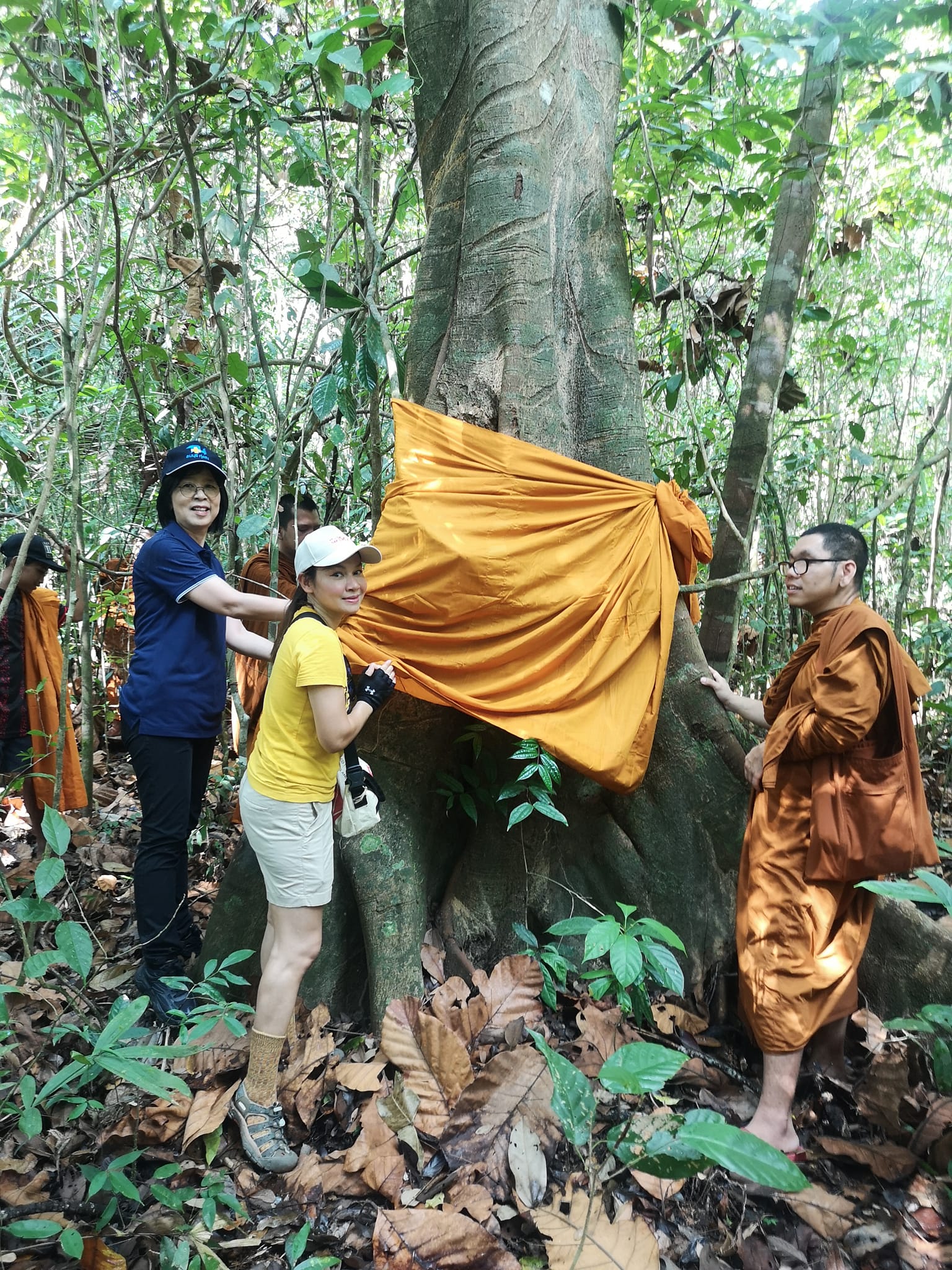
In another effort, Dr. Prasert Nontakarn from the Faculty of Science and Technology implemented a project to support avian diversity in Thung Song Municipality. Recognizing that birds are essential indicators of ecosystem health, his team designed a plan to provide food and water sources for local bird populations, especially during the dry season. Artificial ponds and feeding stations were constructed to help birds survive harsh summer conditions. These small habitats also support other wildlife, contributing to greater biodiversity in urban and suburban areas. The activity engaged local residents and students in maintaining the bird ponds and observing avian behavior. Through this participation, people developed a deeper appreciation of the ecological roles birds play, such as pollination, pest control, and seed dispersal. The data collected from bird monitoring helps assess the effectiveness of local conservation strategies. This activity initiative combines practical action with environmental education. It emphasizes how scientific planning and community collaboration can create resilient urban ecosystems. Altogether, these combined efforts by RUTS demonstrate the university’s leadership in advancing biodiversity conservation and sustainable ecosystem management in southern Thailand.
